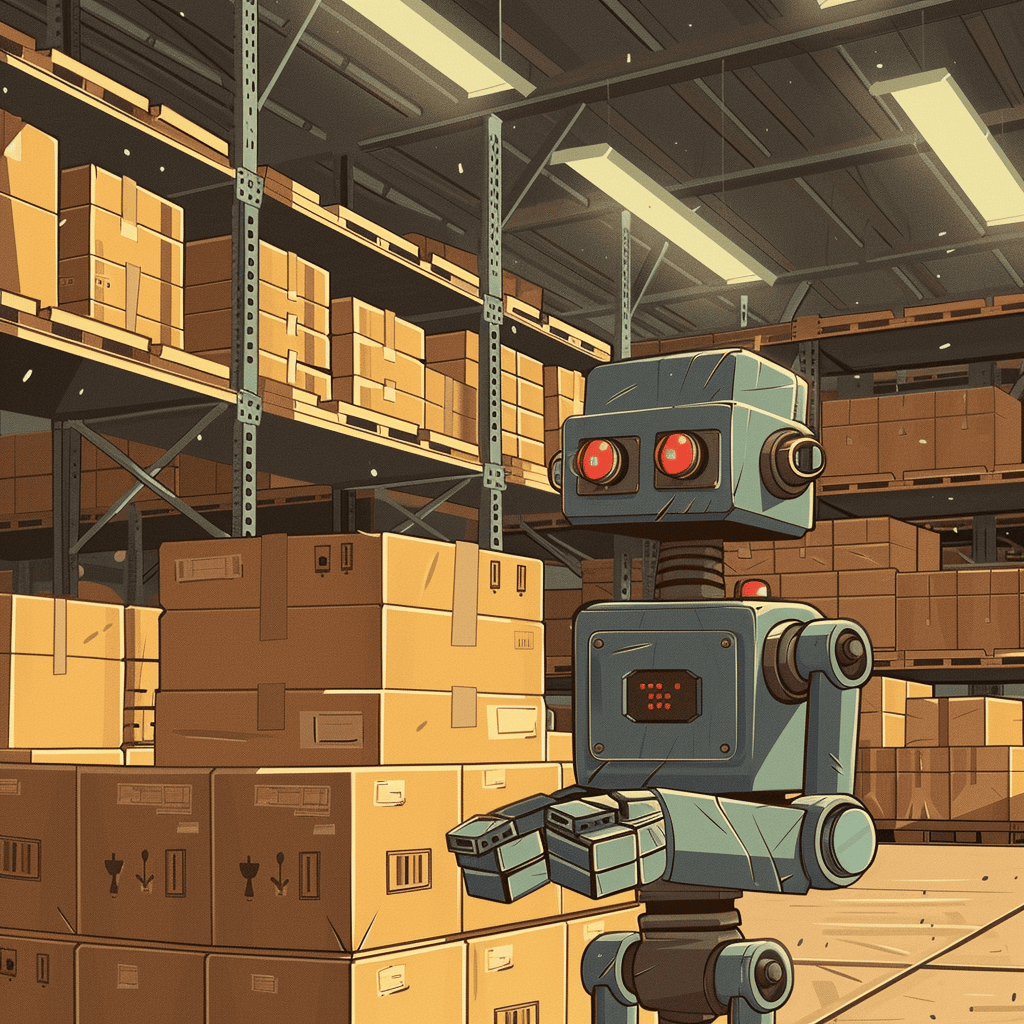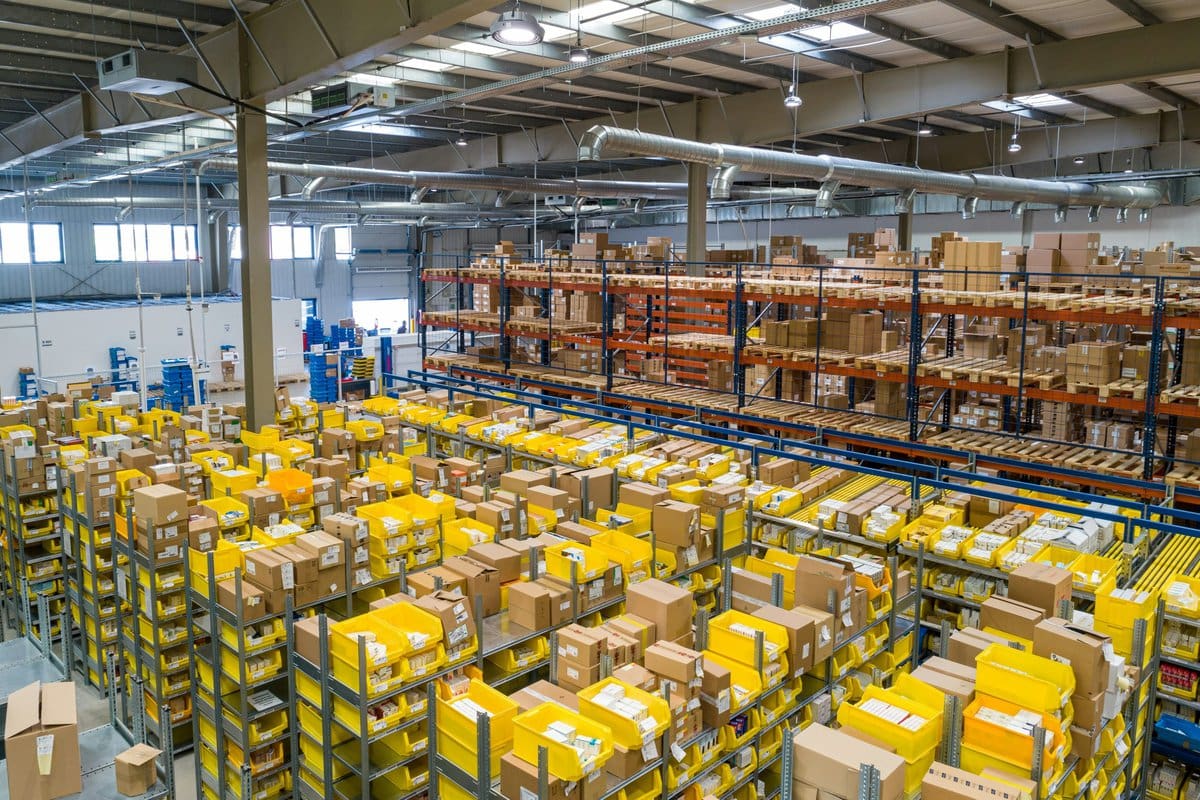In today’s fast-paced global economy, efficient logistics operations are essential for businesses to stay competitive and meet customer demands. With the advent of advanced technologies, logistics automation has emerged as a game-changer, revolutionizing the way supply chains operate. From warehouses to transportation, automation technologies are transforming traditional logistics processes, driving efficiency, cost savings, and enhanced agility.
This article explores the rise of automated logistics and its profound impact on the supply chain landscape.

Supply chain challenges and how they affect businesses
To evaluate the difference logistics automation can make, let’s take a look at a common supply chain challenge faced by many businesses: demand forecasting errors.
If a retail company that sells clothing online and in stores wants to meet customer demand effectively, it must accurately forecast how many units of each clothing item will be sold during different seasons, promotions, and trends. However, despite their best efforts, the company’s demand forecasting process is prone to errors.
Here’s how this challenge manifests:
1) Inaccurate forecasts
The company’s demand forecasting models may fail to capture shifts in consumer preferences, changes in market conditions, or unexpected events (such as a sudden heatwave or a viral social media trend). As a result, the company may overestimate or underestimate demand for certain clothing items, leading to excess inventory or stockouts.
2) Inventory management issues
When demand forecasts are inaccurate, the company may struggle to maintain optimal inventory levels. Overestimating demand leads to excess inventory, tying up capital and warehouse space, while underestimating demand results in stockouts, missed sales opportunities, and dissatisfied customers. Utilizing advanced tools like Llumin for predictive maintenance and real-time inventory monitoring can help mitigate these issues by providing better insights and control over inventory levels.
3) Supply chain disruptions
Inaccurate demand forecasts can exacerbate supply chain disruptions. For example, if the company overestimates demand and orders excessive inventory from suppliers, it may face challenges in managing excess stock, coordinating transportation, and avoiding obsolescence. Conversely, if the company underestimates demand and fails to procure enough inventory, it may struggle to fulfill customer orders on time, leading to lost revenue and damaged reputation.
4) Impact on revenue and profitability
Ultimately, demand forecasting errors can have significant financial implications for the company. Excess inventory ties up working capital and incurs storage costs, while stockouts result in lost sales revenue and potential damage to customer loyalty. Moreover, frequent forecasting errors can erode profitability and hinder the company’s ability to invest in growth initiatives.
Addressing this supply chain challenge requires a multifaceted approach, including the adoption of advanced forecasting techniques, leveraging data analytics and machine learning algorithms, improving collaboration with suppliers and distributors, and enhancing flexibility and agility in the supply chain. Such an approach is something that can be arranged within an automated logistics framework.
By addressing demand forecasting errors effectively, the company can optimize inventory management, minimize supply chain disruptions, and ultimately improve customer satisfaction and profitability.
Evolution of logistics automation
Historically, logistics operations relied heavily on manual processes, leading to inefficiencies, errors, and delays. However, advancements in automation technologies, including robotics, artificial intelligence (AI), and Internet of Things (IoT), have paved the way for a new era of logistics automation. Today, automated systems are capable of handling complex tasks such as inventory management, order fulfillment, and route optimization with unparalleled speed and accuracy.
- Warehouse automation
One of the key areas where logistics automation is making a significant impact is in warehouse operations. Automated guided vehicles (AGVs), robotic arms, and automated storage and retrieval systems (AS/RS) are increasingly being deployed to streamline warehouse processes. These technologies automate tasks such as palletizing, picking, packing, and sorting, reducing labor costs, minimizing errors, and maximizing storage space utilization.
- Fulfillment centers and robotics
E-commerce growth has driven the need for highly efficient fulfillment centers capable of processing a large volume of orders quickly. Robotics plays a crucial role in automating fulfillment operations, with robots working alongside human workers to pick, pack, and ship items. Autonomous mobile robots (AMRs) navigate warehouse floors, retrieving products and delivering them to designated packing stations, improving order accuracy and fulfillment speed.
- Transportation and last-mile delivery:
Automation is also transforming transportation and last-mile delivery, addressing challenges such as driver shortages, rising fuel costs, and increasing consumer expectations for faster deliveries. Self-driving trucks and delivery drones are being developed to automate long-haul and last-mile delivery operations, reducing delivery times and costs while enhancing safety and efficiency.
- Predictive analytics and AI:
The integration of predictive analytics and AI is enabling logistics companies to optimize supply chain processes and make data-driven decisions in real-time. AI-powered algorithms analyze vast amounts of data to forecast demand, optimize inventory levels, and predict delivery times accurately. By leveraging predictive analytics, organizations can reduce stockouts, minimize excess inventory, and improve overall supply chain efficiency.
- Sustainability and green logistics
Logistics automation also contributes to sustainability efforts by reducing carbon emissions, energy consumption, and waste in the supply chain. Electric-powered vehicles, optimized route planning, and energy-efficient warehouse technologies help minimize the environmental impact of logistics operations. Additionally, automation enables better resource utilization, leading to more sustainable supply chain practices.

Challenges and considerations
Despite the numerous benefits of logistics automation, there are challenges and considerations that organizations must address. These include upfront investment costs, technological complexity, workforce reskilling, and cybersecurity risks. Moreover, ensuring compatibility and integration among different automation systems and legacy IT infrastructure can pose implementation challenges.
Regardless of these challenges, the future of automated logistics
holds immense potential for further innovation and transformation. Advancements in technologies such as 5G connectivity, edge computing, and robotics will enable even greater levels of automation and efficiency in supply chain operations. Additionally, the ongoing convergence of physical and digital supply chains will drive the adoption of integrated automation solutions, creating seamless end-to-end visibility and control.
Logistics automation is reshaping the supply chain landscape, offering unprecedented opportunities for organizations to optimize operations, improve efficiency, and meet evolving customer demands. By embracing automation technologies and cooperating with experienced technology partners to leverage data-driven insights, businesses can gain a competitive edge in today’s dynamic marketplace while driving sustainable and resilient supply chain practices for the future. As the pace of technological innovation accelerates, the journey towards fully automated and intelligent supply chains is well underway, heralding a new era of efficiency and agility in logistics operations.

